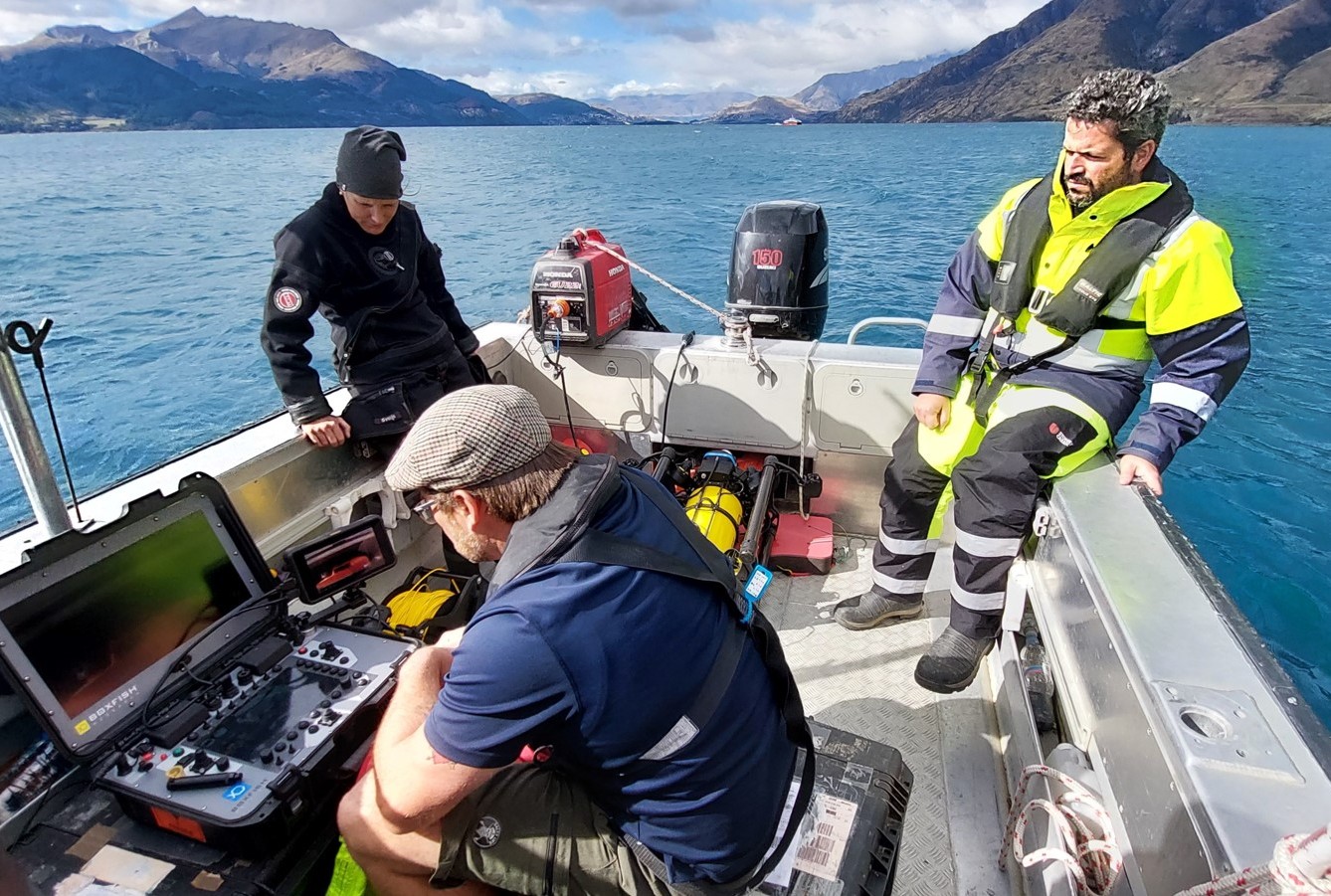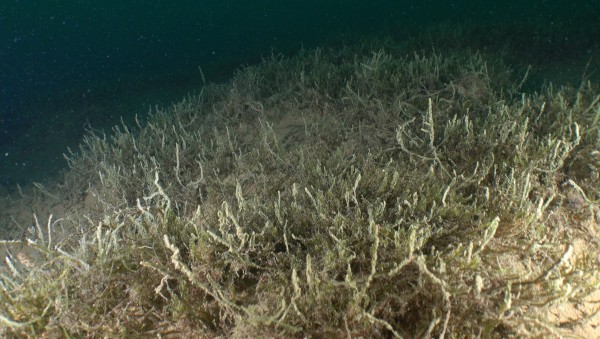Hunting for freshwater ‘freak of nature’ in Otago

A team of NIWA scientific divers have successfully searched for a freshwater freak of nature in Otago’s alpine lakes.
They have unearthed plants that comprise moss and liverwort species, which are collectively known as deep-water bryophytes when found deep within lakes.
They were first discovered by NIWA divers in Otago’s lakes in the 1980s and 1990s and are a globally rare plant community, with New Zealand being one of the few places worldwide to support blankets of these species.
This year, Otago Regional Council (ORC) commissioned NIWA to undertake a submerged plant survey in Lakes Whakatipu, Wānaka, and Hāwea, hoping to build upon the knowledge gained over three decades ago and establish a regular monitoring protocol.
NIWA freshwater ecologist Mary de Winton was part of the dive team that first studied the bryophytes in the 1990s.
“I was apprehensive about whether we’d find them again because climate and lake catchments have changed a lot in 30 years, but we were delighted to see the plants still thriving down there. Bryophytes are usually found in moist environments like damp forest floors and shady rock faces, but we saw them in Lakes Whakatipu and Wānaka up to 50m down.
“It’s a really unusual place for them to grow, but we think they were washed into the lakes eons ago and have found a niche in the quiet twilight depths. If it wasn’t for the extreme transparency of our lake water, we don’t think this ‘freak of nature’ would have survived,” de Winton says.

ORC’s Scientist – Lakes, Hugo Borges says the survey was a success, with more work planned later in the year.
“We haven’t done a full analysis yet, but we successfully revisited all sites and found deep-water bryophyte in some of them. We used a remotely operated vehicle to explore the lakebed, so have hours of footage to study – this will give us a better understanding of the extent of bryophytes coverage, which we can compare to the previous surveys,” Borges says.
NIWA and ORC have scheduled a dive programme every three years to monitor Otago’s submerged plan communities.
The results of this initial study will provide a baseline to monitor the health of this unusual community, which will be crucial for tracking environmental change, while the depths they grow down to will provide an indicator of the long-term clarity of the lakes.
“Despite being simple organisms, deep-water bryophytes play a vital role in ecosystem functioning by providing habitats, improving water quality, and aiding biodiversity. They are highly sensitive gauges of water transparency, light transmission, sedimentation rates, temperature fluctuations, and changes in dissolved gases, all of which give us clues into the health of our freshwater environments,” Borges says.
Light levels where deep-water bryophytes are found have been estimated at less than 1% of the sunlight falling on the lakes surface. A record of 128m for deep-water bryophytes was described for an Oregon lake in the year 2000.









